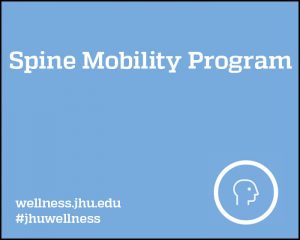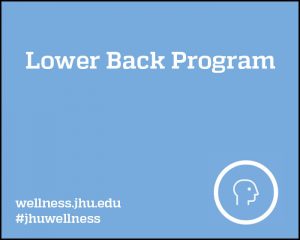Our bodies are designed for exercise. While social media can make it seem like fitness is an elite club for thin, athletic people, this simply isn’t true! Human bodies – all of them – have amazing, innate machinery crafted for movement and for recovery from that movement.
Exercise is key to promoting physical and mental wellness. However, recovery is an important step that a lot of people skip over on their fitness journey. Let’s change that!
To start, most of us have experienced a range of sore muscles following exercise or strenuous activity. That soreness is caused by eccentric muscle contractions, such as slow lowering while lifting, downhill running, or novelty exercise movements.
Our brilliant bodies recognize the muscle damage caused by exercise as an immune response; thus, our sensory neurons register the muscle damage as pain and soreness until the damage is “cleared out” by our white blood cells and inflammatory cells.
This response is normal and necessary for adaption. On the milder spectrum, it is common to experience delayed onset muscle soreness (DOMS) after a bout of new or challenging exercises. It is typically alleviated within a few days.
Excessive soreness that causes a decrease in exercise performance and limits physical activity should not be common after workouts. This soreness is often associated with muscle damage and may last up to three or four weeks. If you are consistently experiencing excessive soreness, it is typically an indication that you are performing too much volume or not recovering adequately. Our recommendation for making recovery a part of your exercise routine is to go for the “low-hanging fruit” in your personal health behaviors: sleep, nutrition, movement, and planning.
Sleep
You snooze, you win.
The more sleep deprived you are, the less insight you have into your own cognitive performance. Sleep is a metabolic reset. Research shows sleep provides the brain and body with energy, as well as muscle and tissue recovery. It consolidates our long- and short-term memories, boosts our immune system (important during a pandemic), and releases growth hormones for bone and muscle restoration.
Only sleep can replace sleep. The average amount of sleep necessary for adults is seven to nine hours each night. Sleep banking (i.e. sleeping more prior to known sleep loss) can be more beneficial than “catch up” sleep. This is great to incorporate prior to travel, a stressful event, or a big test. That incredible feeling after a good night’s sleep shows in our physical, mental, and cognitive performances, and it gives us a boost in mood and productivity.
Nutrition
The goals of nutrition and recovery are to refuel with carbohydrates, repair with protein, and restore fluids lost.
Within 90 minutes of your workout, reach for a protein- and carbohydrate-focused combination. More specifically, the recommended post-workout ratio of carbohydrate grams to protein grams is 3:1. Examples of great post-workout snacks include fruits and tree nuts, milk and chocolate milk, peanut butter and toast, deli meat sandwiches, crackers and tuna, or a protein bar.
Water intake is also essential for optimal recovery. A mouthful of water is approximately one fluid ounce (fl oz) of water. To hydrate before a workout, you should drink up to 30 fl oz of water two to four hours prior to activity, depending on your weight. It is also recommended to replenish with 16-20 fl oz after a workout. Water intake is essential even if you are not working out. Throughout the day, set a water goal to drink about half your body weight in fluid ounces.
Overall, your body needs fuel in the form of calories. Our metabolism is broken down into four major parts:
- energy expended for basic daily function,
- energy expended during basic daily movement,
- energy expended digesting the food we eat,
- and energy expended from exercise.
No matter what your fitness level is, it is crucial to eat enough calories to support your body’s daily function. Proper caloric intake supports healthy brain function, hormone regulation, bone health, and so much more. The human body prefers to use carbohydrates and fats for energy. This allows protein to be reserved for the metabolic functions of rebuilding and repairing muscles, which cannot be done by the other nutrients.
Individuals with body composition and performance goals typically resort to restricting carbohydrate and calorie intake. However, your ability to burn fat during a workout has more to do with your metabolic health and physical fitness. When individuals restrict calories, our bodies utilize protein for fuel instead of building muscles. In actuality, the more muscle tissue we build, the better we are going to adapt to the stresses of exercise, spare our body of a costly energy conversion, and in turn burn more fat.
There are a lot of conflicting nutrition plans (i.e., Keto, Paleo, 75 Hard, Atkins) in today’s world, but they almost all come down to the following core components:
- reducing processed foods,
- increasing fruit and vegetable intake,
- increasing hydration,
- increasing complete protein intake,
- reducing alcohol intake,
- increasing fiber intake,
- increasing sustainable fats,
- and making overall conscious choices about food and health–promoting behaviors.
With all that said, it is important to focus on what you can add to your diet and what benefits those additional nutrient-dense foods deliver to your body. In your daily life, finding a system of eating that works for you in the long-term matters far more than the name of the plan.
Whatever your nutrition goals, the best plan is one you will actually stick to, just like the best exercises are the ones you will actually do. Figure out what those are for you, and don’t get too hung up on labels or following a “program” perfectly.
Movement
Movement is always a part of recovery, but it does not always have to be strenuous or fatiguing. Gentle, progressive, and challenging exercises are often exactly what the body needs when dealing with pain and/or chronic injuries. The catchphrase commonly used in the sports medicine and rehabilitation world is, “Motion is lotion.” In fact, collective evidence exists that physical activity, more specifically strength training, is important in both prevention and treatment of injury and chronic illnesses for all age groups.
The most common prescription for pain is rest, but active goals require active treatments. Rest days are important; rest weeks can do more harm than good. Try working around limitations by going for a 20–minute walk/bike ride or participating in a yoga class.
In recent years, foam rolling (FR), a form of self-massage in which targeted muscles are rolled and compressed utilizing a FR device, has become a common technique used by a wide range of active individuals due to the fact it is affordable, easy, and time-efficient. The motions of FR place both direct and sweeping/rolling pressure on the soft tissue, generating friction between it and the FR device.
Anecdotally, the positive effects of alleviating muscle soreness endorse the utilization of post-activity rolling. However, despite its popularity, no consensus in research studies exists on the post-activity benefits of FR. In fact, evidence seems to justify the widespread use of FR as a warm-up activity rather than a recovery tool.
Below you will see an example of a home exercise program (HEP) for lower back pain. This type of exercise program provides the option of performing low-impact movement in combination with strengthening exercises and mobility work. The lower back is one of the most common body parts affected by muscle and joint pain, especially during quarantine when a lot of us are sitting more than we usually do.
Planning
What’s the best way to stay healthy in the gym, in your living room, or on the field? Make small, incremental changes over a long period of time. Find a routine and establish sustainable workout habits. This temperate approach to training will result in improvement over time.
For some people, this means going to bed 30 minutes earlier than usual. For others, it means scheduling time each day for physical activity or making sure they’re eating enough to fuel their bodies. If you are having trouble figuring out all this information on your own, do not be afraid to ask for help! Knowledge is power. Within the Hopkins system, there are a multitude of resources and professionals to help with students’ individual needs, like trainers, nutritionists, doctors, fitness instructors, and more.
It’s important to have goals that you work towards, but try not to let that get in the way of enjoying life. Prioritize moderation and mental health above all.
Home Exercise Plans
Click on the images below to access PDFs of free home exercise plans.
If you would like to see examples of how to do the exercises in the lower back program, go to www.HEP.video and enter the video number for the relevant move.
Note: The information provided in the HEP is not intended or implied to be a substitute for medical advice, diagnosis or professional treatment.
Categories
- Environmental (61)
- Financial (60)
- Mental (214)
- Physical (298)
- Professional (178)
- Sexual (82)
- Social (186)
- Spiritual (26)
Archives
- July 2025
- May 2025
- April 2025
- March 2025
- February 2025
- January 2025
- December 2024
- November 2024
- October 2024
- September 2024
- August 2024
- July 2024
- May 2024
- April 2024
- March 2024
- February 2024
- January 2024
- December 2023
- November 2023
- October 2023
- September 2023
- August 2023
- June 2023
- May 2023
- April 2023
- March 2023
- February 2023
- January 2023
- December 2022
- November 2022
- October 2022
- September 2022
- August 2022
- July 2022
- June 2022
- May 2022
- April 2022
- March 2022
- February 2022
- January 2022
- December 2021
- November 2021
- October 2021
- September 2021
- August 2021
- July 2021
- June 2021
- May 2021
- April 2021
- March 2021
- February 2021
- January 2021
- December 2020
- November 2020
- October 2020
- September 2020
- August 2020
- July 2020
- June 2020

